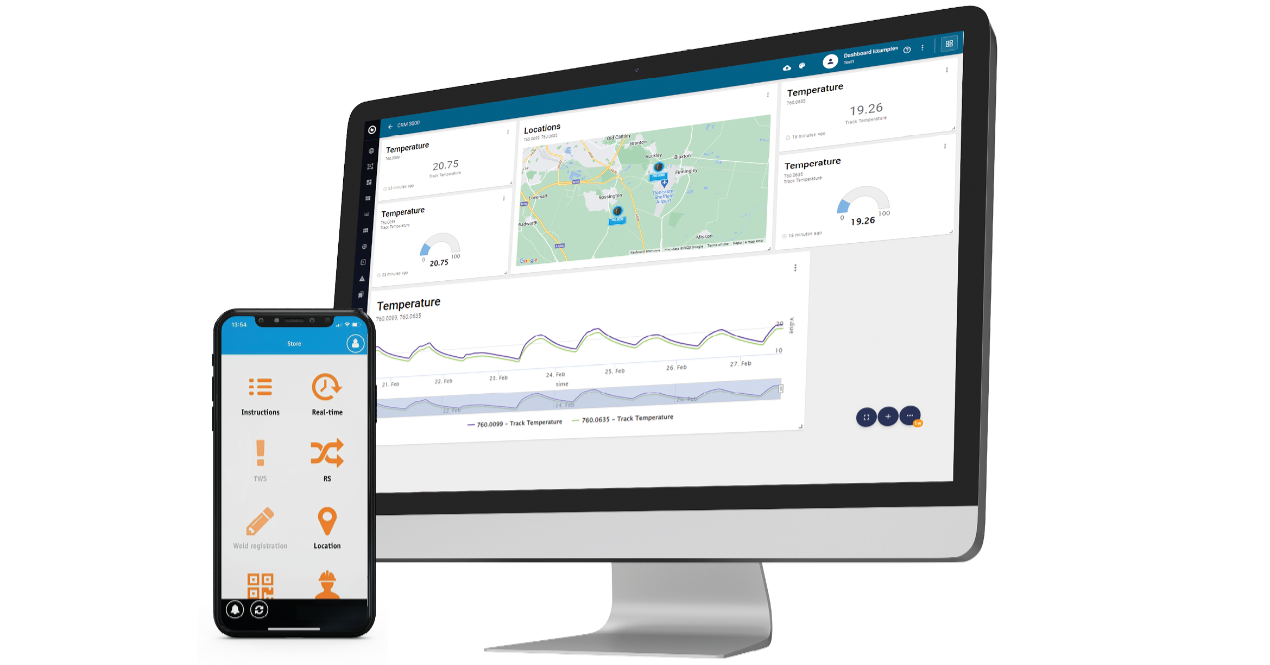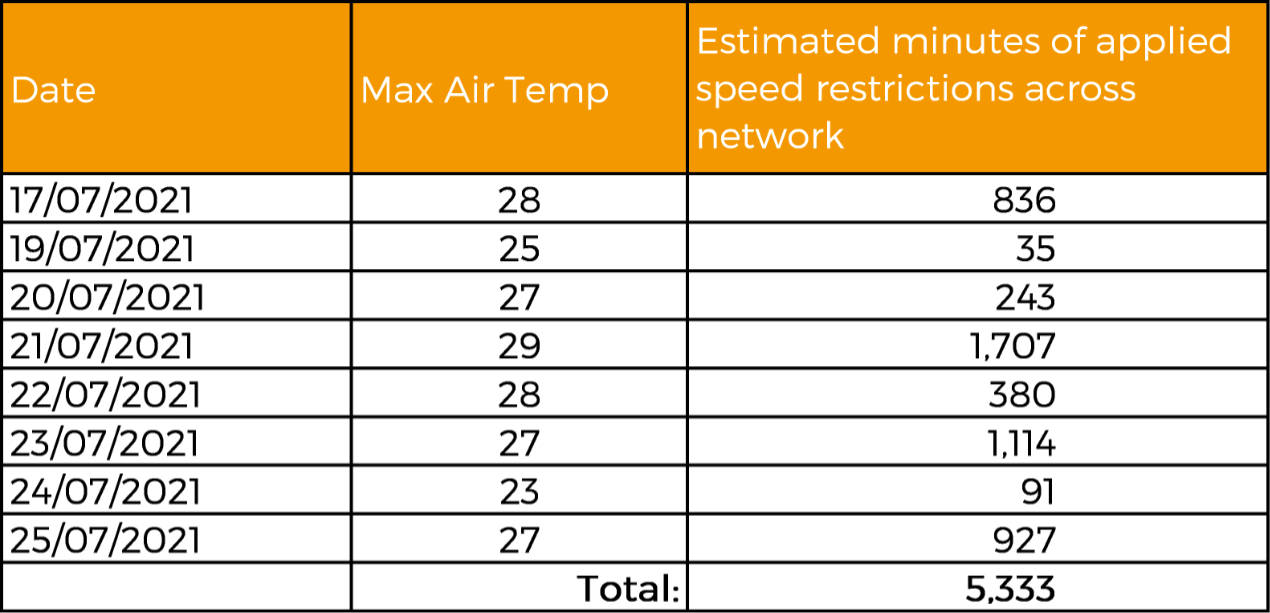Deployment of CRM 3000 across Translink rail network
Background
Dual Inventive was approached by Translink in early 2022. They were interested in the CRM 3000 as they were looking for a remote digital solution to monitor rail temperature across their network in Northern Ireland – from Londonderry in the Northwest to the border with the Republic of Ireland just south of Newry.
Translink wanted a digital solution:
- that was easy to deploy
- that would monitor the temperature of the rail to help safely manage high-rising rail temperatures
- to provide real-time data to help make informed choices
- to receive notifications and alerts when the temperature reaches a set threshold, and
- to reduce the need to deploy staff trackside.
The Solution
Dual Inventive’s CRM 3000 is a compact remote temperature sensor that attaches to the web of the rail with a quick-fit magnet. Its robust construction is fully weatherproof and will last up to 5 years in track without the need for any servicing or recalibration.
The CRM 3000 takes a temperature reading every 5 minutes and transmits these readings every hour to Dual Inventive’s secure online platform, via the Vodafone Business Narrowband Internet of Things technology (NB-IoT) network. This enables the end user to set alarm thresholds and create graphics-based dashboards to remotely monitor the network, reducing the requirement for staff to be trackside in a high-risk environment.
The device is a low-cost alternative to other solutions on the market and is offered on a lease contract with a minimum term of 2 years. The price includes the device and access for up to 25 users on the online platform and via the App which is available from Google Play and Apple store.
The CRM 3000 is already in use across multiple networks in the UK and Europe and has full Network Rail Product Approval.

Implementation
Due to the cost efficiency of the CRM 3000, Translink were able to purchase leases for 40 devices which enabled them to cover as much of their network. Compared to other solutions, Translink was able to monitor rail temperatures across a much wider network.
The devices were delivered in early May 2022 and then deployed across the network. Translink chose to place the devices close to Met Office weather stations and other key sites such as large south facing cuttings and elongated multiple spanned bascule bridges so that data from the Met Office predictions could be correlated with the actual readings from the CRM 3000 devices.
The quick and easy installation enabled the devices to be placed with minimal disruption and without the need for staff to be trackside for long period of time. Locations of the devices were then logged on the App so that they could be viewed online.
Findings
For comparable results data from Translink was analysed for the period of:
- July and August 2021 before they had deployed the CRM 3000, and
- July and August 2022 after fully deploying their CRM 3000 devices.
Rail temperatures of 45°C and above triggered a speed reduction on the Translink network and in July and August 2021 this resulted in an estimation of 5,333 minutes of speed restrictions on the network across a 2-month period as shown in Table 1 below:

Table 1 – Estimated Speed Restrictions July/August 2021
2021 July average temperature: 17°C
2021 August average temperature: 15°C
The same period in 2022 saw a vast reduction in speed restrictions as shown in Table 2:

Table 2 – Estimated Speed Restrictions July/August 2022
2022 July average temperature: 16°C
2022 August average temperature: 16°C
The temperature range over the past 2 years differs slightly. Table 2 evidently shows that in 2022 during this period the extremely high temperatures lasted significantly longer than in 2021.
Conclusions
Translink found that the CRM 3000 gave them much more confidence in managing their network over the summer period, and the devices enabled them to compare predicted air temperature with the actual temperature of the rail across the network. This reliable data, particularly with regard to the time and length of the heat spikes, allowed Translink to reduce the number of speed restrictions.
Whilst several factors must be taken into consideration, such as cloud cover, duration of prolonged high temperature etc, the average temperatures across the 2 periods were largely the same and it must be noted that 2022 saw the highest temperatures on record.
The CRM 3000 enabled Translink to keep their network running more efficiently, reducing the total number of, and the severity and length of the speed restrictions.
Stephen Lavery, Permanent Way Technical Engineer from Translink said: “It’s been revolutionary having the ability to manage rail temperatures remotely. The more we know about rail temperatures on our network, the more accurately we can manage the system”.
Data sources
- Speed restriction data – Translink
- Historical Temperature data: